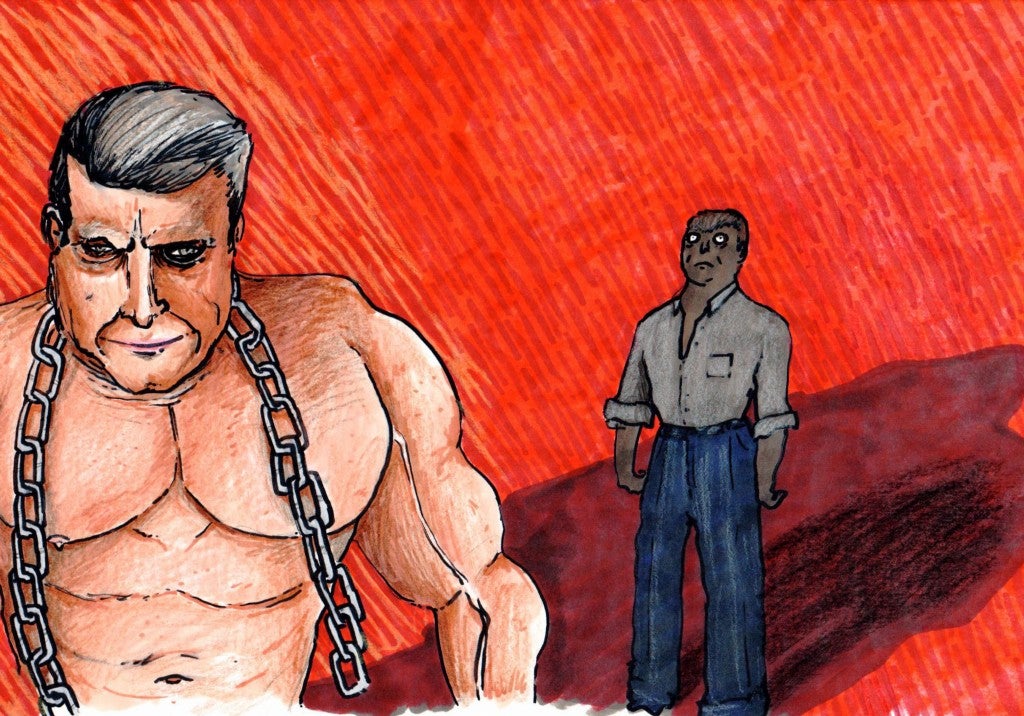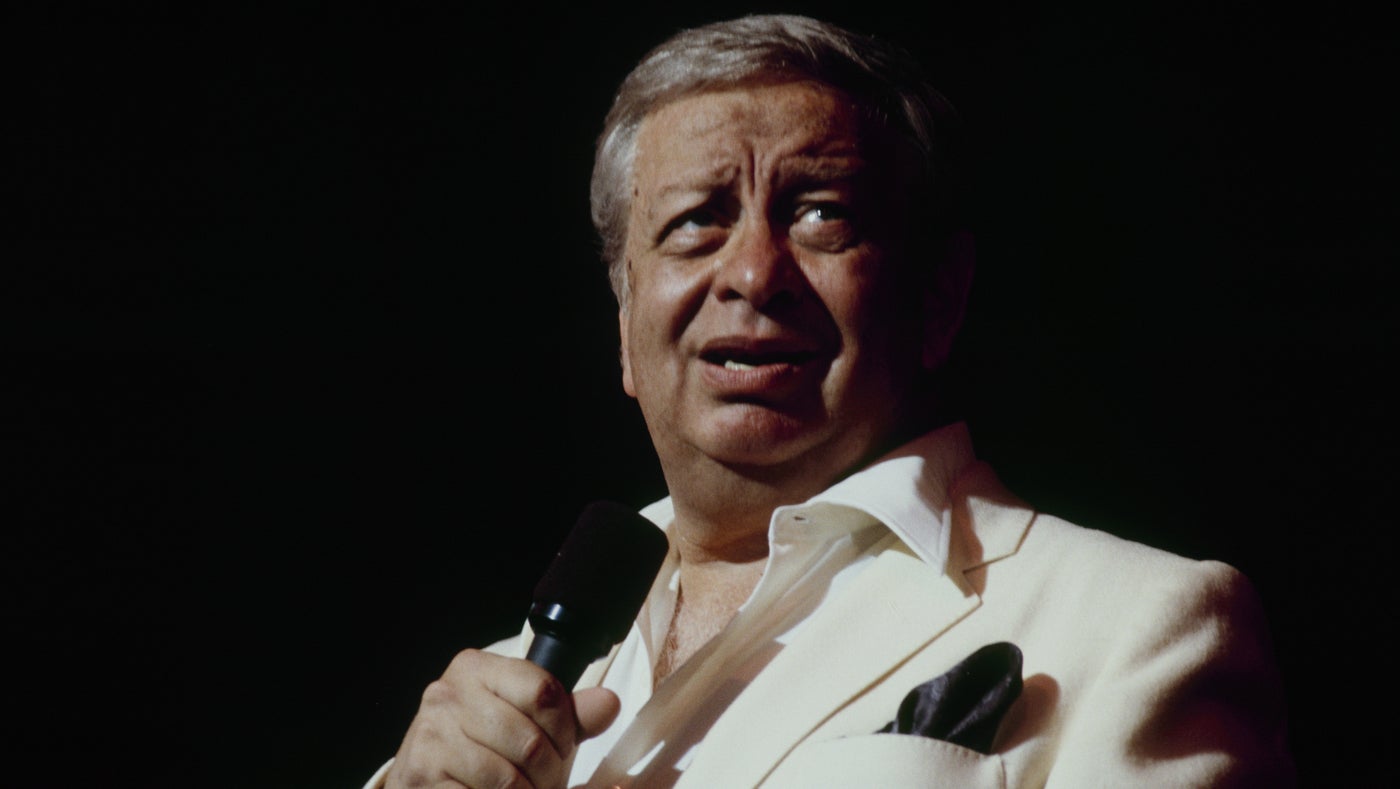Shane McMahon, spawn of grapefruit-sized testicles and fourth generation scion of World Wrestling Entertainment, returned to the family business roughly six weeks ago as a performer, not an executive. As part of a new storyline, he came back to a live episode of Monday Night Raw to confront his father (CEO Vince McMahon), sister (chief brand officer Stephanie McMahon-Levesque) and brother-in-law (current WWE champion and executive vice president Triple H) about the shit job they’d been doing running the company since he left his position as WWE’s executive vice president of global media in 2009.
“Let’s take a few indicators,” he explained, telling the Raw audience exactly what they wanted to hear. “Let’s look at the stock. Let’s look at ratings. Let’s look at the plethora of talent injuries. All under your watch. All under your auspices. Down into the ground. Great job.” He then threatened Vince with blackmail unless he put him in charge of Raw, the company’s flagship television program.
But in real-life, Shane came back to do his old man a solid. For all of the reasons he ticked off — uneven stock performance, crappy ratings and a seemingly contagious run of damaged rotator cuffs and assorted other tears and breaks — business ain’t great. (Raw’s ratings in particular are at low-point from their astronomic highs of the late ‘90s.) And it ain’t great at the exact time of year when it needs to be, the lead up to Sunday’s Wrestlemania, the WWE’s annual marquee event that the company was hoping would break attendance records this year by filling 100,000 seats at AT&T Stadium in Dallas.
So in a last-ditch attempt to find enough asses to fill all of those seats, Vince offered up something completely unexpected — the seemingly impossible return of his 46-year-old son, the only McMahon his audience doesn’t loathe. He and Stephanie were also sure to immediately seize on all of the family drama — real or imagined — that came with it. “You don’t know what it means to be a success, Shane,” his sister lectured him. “How would you? You’re nothing more than a quitter.” Riffing on this theme, Vince decided to place Shane in a steel-cage “Hell in a Cell” match — where things like this typically happen — since the chain-link fence containing the ring would make it impossible for him to “take his ball and run home” like “he had before.” (The deal: If victorious, Shane gets Raw; if not, he hands over whatever he’s holding over Vince, the exact specifics of which have been murky.)
That the new wrestling fictions and long-rumored IRL family in-fighting blended together so perfectly was by design. Because the product has been so stale for so long, speculating about succession planning is the only way to make the boredom stop — with the McMahons’ family dynamic (Brother v. Sister! Father v. Son! Brother-in-law v. Brother-in-law!) the most entertaining part of the WWE these days.
Back in 2009, Shane’s exit from the WWE was mostly believed to be about the daddy issues that come from having a famous father with a famous company that can fuck with your identity and sense of accomplishment — especially when your dad is your boss. Vince, too, has daddy issues. They’re shittier than Shane’s in some respects (he didn’t meet his biological father, Vince McMahon Sr., until he was 12), but less challenging in others (Vince’s dad wasn’t a billionaire who dominated his industry so thoroughly that he put everyone else out of business). In other words: It was easier for Vince Jr. to powerbomb his father’s legacy through a table than it was for Shane. “I wanted to do it on my own,” Shane told BuzzFeed two years ago, one of the few public statements either McMahon made about Shane’s departure. “There was always that one little question: Can I get it done outside of the company? My dad, although I learned so much, he cast a big shadow.”
Shane struck out on his own seven years ago by peddling pay-per-view in China as chairman of YOU on Demand (the so-called “Netflix of China”), an endeavor he put $4 million of his own cash into. Ultimately, it was a very McMahon business venture to pursue considering Vince helped pioneer pay-per-view here in the U.S. with the first Wrestlemania in 1985. He also got the gig in part because as the WWE’s executive vice president of global media, Vince had tasked him with exporting WWE content to the rest of the world — i.e., he knew how to do business in China.
Generally when he worked for his dad, Shane was regarded as an innovator for wanting to do the exact opposite of what made Vince successful: Instead of crushing the competition into a distant memory, Shane wanted to acquire them and run them as separate brands — more PepsiCo than U.S. Steel. All the while, he beat his body to shit in the ring, where he was sort of a special attraction (See the boss’s kid get his ass kicked!) from the late 1990s until he joined YOU on Demand. He didn’t wrestle as much as perform live stunts. At the 2000 edition of SummerSlam, “The Lethal Weapon” Steve Blackman continued to lash Shane with a kendo stick until he plummeted from the top of a 40-foot stage rig. A year later at WWE’s King of the Ring pay-per-view, Olympic gold medalist Kurt Angle suplexed him through a plexiglass window. (The window didn’t give the first two times, which meant Shane’s head, neck and back broke his fall.) He also competed against Vince in a “Street Fight” at 2001’s Wrestlemania X-7 — their beef was mostly fictional this time around — wherein Shane flew across the ring and dropkicked an aluminum garbage can into his father’s face. (For all this blood-letting and more in GIF-form, check out Cageside Seats’ “An Introduction to the Balls Out Insanity of Shane McMahon.”)
For defying both paralysis and Vince’s way of doing business, Shane quickly became the preferred McMahon. He also became likeable, a quality typically missing from the McMahon family genome. His birthright wasn’t a given; it needed to be seized in the most fucked up way possible — by beating back his control freak father as well as the large, violent men his dad paid to kick the ever-living crap out of him on a somewhat monthly basis. Not to mention that it was a shared birthright. His sister, Stephanie, became a presence in TV storylines and around WWE corporate headquarters about the same time as Shane in the late ’90s. She, too, got in the ring. But she risked her dignity more than bodily harm. The best example, from the early aughts, an era when fans were encouraged to chant SLUT whenever she appeared at live events:
To her credit, in the last few years, she’s personally shaken the WWE from its decades-long un-woke slumber. Her most impressive feat to date: Establishing the female wrestlers on the WWE roster as something other than the pages of a live-action Joy Book for her father. On her watch, the male ideal also has shifted — if just ever so slightly and probably without proper credit — from overly inflated chemistry experiments such as Hulk Hogan (Vince has a type) to builds like Seth Rollins’ (a CrossFit king) and Daniel Bryan’s (a vegan lumberjack hipster). Which, of course, is ironic given that the musclebound Triple H is very much the Vince type.
And yet, she still gets a ton of shit for driving the company into the ground. Nor can anyone stop talking about how much better things would be if Shane were in charge. Part of this is likely a gender thing. (Maybe the WWE isn’t the only un-woke one here?) Part of it, though, is likely because she and Triple H are perceived as working within the political and megalomaniacal confines of Vince’s world as opposed to blowing it up and starting over. Whether or not that’s what Shane would really do is probably more wishful thinking than reality. (Is he considered a risk-taker just because he’s insane enough to leap from tall steel structures?) But the underdog outsider is always easier to love than the change agent from within.
Some sort of storyline resolution is promised for Sunday. In that Hell in a Cell match, Shane is scheduled to take on the Undertaker, Vince’s most loyal hand and a dude who still enjoys finding new ways to brutalize other grown men, even at 51. The subtext at least is more than just about Shane controlling Raw. Essentially, a Shane victory will mean that Stephanie and Triple H have been vanquished and all will become right in the WWE universe again.
In order to win, Shane will most likely attempt some physically impossible spot that will involve a non-negligible percentage chance of life-threatening injury. This will only solidify his position as the favorite McMahon and Stephanie and Vince as the evil McMahons trying to keep him down. And it only underscores how fucked up the McMahon family dynamic is: Hey son, I’m probably going to leave my billion-dollar company to your sister and her husband, but if you’re free on Sunday, could you drop by Dallas and defy death in a novel way? The business could really use a shot in the arm.
Obviously, none of this will settle the WWE succession plan in real-life. Shane still has his day job at YOU on Demand. Stephanie and Triple H are still the first family of the WWE. And Vince still remains upright and breathing. But it has allowed fans to feel as though they’re somehow part of the process — and that they’re getting a taste of what it must be like at a McMahon family gathering (the tension, the resentment, the intrigue). It’s also created a ton more interest in Wrestlemania than there was before Shane came back. And wasn’t that the whole point in the first place — ensuring that there was a family business left to fight over?
Josh Schollmeyer is the Editor-in-Chief of MEL.

